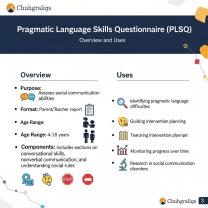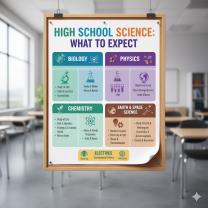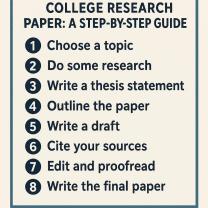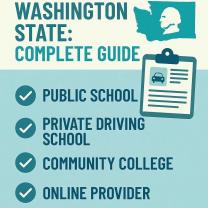What are the approaches to classroom management?
Classroom management involves strategies and techniques that educators use to create a positive and productive learning environment while minimizing disruptions. There are several approaches to classroom management, each with its own principles and strategies. Here's a comprehensive overview of some common approaches:
Assertive Discipline:
- This approach emphasizes clear rules, expectations, and consistent consequences. It involves setting clear guidelines for behavior, addressing misbehavior promptly, and providing positive reinforcement for desired behavior.
Positive Behavior Support (PBS):
- PBS focuses on reinforcing and promoting positive behavior rather than solely addressing negative behavior. It involves creating a proactive classroom environment, setting clear expectations, and using rewards and incentives to motivate students.
Responsive Classroom:
- The Responsive Classroom approach emphasizes building a sense of community in the classroom. It focuses on teaching social-emotional skills, using morning meetings, and incorporating cooperative learning activities.
Classroom Meetings:
- Classroom meetings provide a forum for students and teachers to discuss concerns, solve problems, and build a sense of community. They promote open communication and help students take ownership of classroom behavior.
Cognitive-Behavioral Interventions:
- This approach helps students develop self-regulation skills by teaching them to identify and modify their thought patterns and behaviors. It emphasizes teaching students how to manage their emotions and make positive choices.
Preventive Classroom Management:
- Preventive strategies focus on setting up the classroom environment for success. This includes arranging furniture, establishing routines, and creating a well-organized, visually appealing classroom.
The 2x10 Strategy:
- The 2x10 strategy involves spending two minutes a day for ten consecutive days having individual conversations with a disruptive student. Building a positive relationship can help reduce disruptive behavior.
Token Economy Systems:
- Token economies use tokens or points as rewards for positive behavior. Students can exchange these tokens for privileges or prizes. It can be effective for motivating students, especially in elementary classrooms.
Reality Therapy:
- Reality therapy encourages students to take responsibility for their behavior by helping them identify their needs and make choices to meet those needs in appropriate ways.
Nonviolent Crisis Intervention (CPI):
- CPI is a training program that equips educators with strategies for safely managing disruptive behavior and de-escalating crisis situations.
Restorative Justice:
- Restorative justice focuses on repairing harm and restoring relationships when conflicts or disruptions occur. It involves bringing affected parties together to discuss the impact of behavior and find solutions.
Individualized Behavior Plans (IBPs):
- IBPs are tailored plans for students with persistent behavior challenges. They include specific goals, strategies, and interventions to support students in managing their behavior.
Teacher-Student Relationships:
- Building positive teacher-student relationships is fundamental to effective classroom management. Students are more likely to follow rules and expectations when they feel valued and respected.
Parent and Family Involvement:
- Involving parents and families in classroom management can provide additional support and help maintain consistency between home and school environments.
Trauma-Informed Approaches:
- Recognizing and addressing trauma in students' lives is essential. Trauma-informed approaches focus on creating a safe and supportive environment for all students.
Educators often combine elements from various classroom management approaches to create a personalized strategy that best suits their teaching style and the needs of their students. Effective classroom management is an ongoing process that requires flexibility, adaptability, and a commitment to promoting a positive learning environment.
The three titles you have provided highlight the importance of classroom management and provide different perspectives on how to achieve it.
Classroom Management Approaches: Strategies for a Harmonious Learning Space
This title emphasizes the importance of creating a harmonious learning space where students feel safe and supported. It also suggests that there are a variety of classroom management approaches that teachers can use to achieve this goal.
The Art of Classroom Management: Different Approaches and Their Benefits
This title highlights the complexity of classroom management and the need for teachers to be flexible and adaptable. It also suggests that different classroom management approaches have different benefits and that the best approach will vary depending on the specific context.
Building a Supportive Learning Environment: Approaches to Successful Classroom Management
This title bridges the gap between classroom management and student learning. It suggests that effective classroom management is essential for creating a supportive learning environment where students can thrive.
Here are some of the most common classroom management approaches:
- Authoritarian: This approach is characterized by strict rules and regulations. Teachers have complete control over the classroom and students are expected to follow orders without question.
- Authoritative: This approach is characterized by clear expectations and consistent enforcement of rules. Teachers are firm but fair, and they provide students with opportunities to learn and grow.
- Permissive: This approach is characterized by a lack of rules and regulations. Teachers give students a great deal of freedom and autonomy.
- Uninvolved: This approach is characterized by a lack of teacher involvement in classroom management. Teachers may be physically present in the classroom, but they are not actively engaged in managing student behavior.
It is important to note that there is no one-size-fits-all approach to classroom management. The best approach will vary depending on the specific context, including the age of the students, the subject matter being taught, and the teacher's own personality and teaching style.
Here are some tips for successful classroom management:
- Establish clear and concise rules and expectations. Make sure that students understand the rules and consequences for breaking them.
- Be consistent in enforcing the rules. Students need to know that they can count on you to be fair and consistent.
- Build positive relationships with students. Get to know your students and show them that you care about them.
- Create a positive learning environment. Make sure that your classroom is a place where students feel safe and supported.
- Be flexible and adaptable. Be prepared to adjust your classroom management approach as needed.
Classroom management is an essential skill for all teachers. By using effective classroom management strategies, teachers can create a more positive and productive learning environment for their students.













